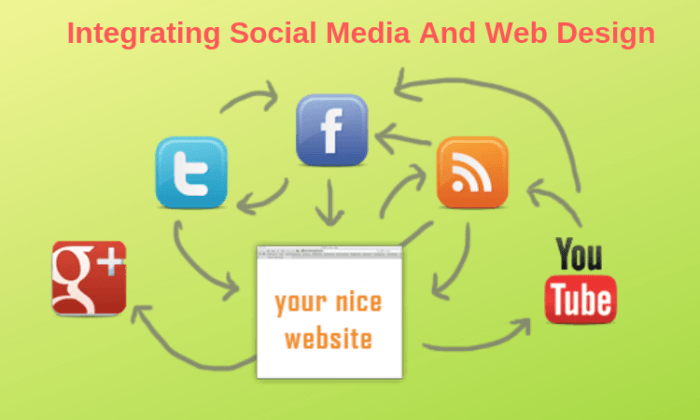7 Creative Ways For Integrating Social Media And Web Design

In order to completely harness the power of the internet for promoting products or services, brands must create a presence on social networks apart from building a website. They must know about integrating social media and web design to maximize the potential of their marketing strategy in the virtual world. A Canadian restaurant chain engaged a Web Development Vancouver firm to create an interface with social elements merged into its design. This helped the eatery to engage the target audience on all virtual platforms which led to improved business at its outlets. In this article, we are discussing some creative methods for incorporating social media elements into web design. Let’s take a look at them.
1. Include Pending Message Notifications
Everyone knows how social channels display pending message notifications to their users. These alerts which are usually visible on the home screen and show the number of unread messages help people in knowing about new activities in their feed. The same tactic can be used by professionals to boost engagement, especially on membership websites. The interface of the Canada-based restaurant group alerted its subscribers about the number of pending discount coupons they had not used. This is a non-intrusive method and much better than pop-ups which can be irritating and distracting. It allows users to check the notifications at their convenience.
2. Display Social Media Buttons At Prominent Website Locations
Many people would think that it is a common tactic rather than being a creative one. In fact, this strategy is never used creatively. Owners do not give much thought to the placement of social media buttons and designers place them in the header, footer or the sidebar according to their layout plan. Not much thought goes into finalizing the dimensions of these tabs. The preferences of the target audience must be considered while deciding the positioning and size of these buttons. For instance, if the potential customers belong to the middle age groups who are social media users but not as active as younger people, then small buttons can be placed in the footer.
3. Use Social Media Symbols In The Layout
Some symbols have come to be associated with social networks. For instance, the hashtag (#) when it precedes a keyword or topic highlights it and enables its search by other users. Similarly, the symbol for the handle, @ is used for displaying a username. Designers can use these characters for creating a socially savvy image of a brand. They can assimilate these marks in the layout of websites. An innovative way of using these symbols would be to display the social handle of the brand in bold letters on web pages.
4. Add Social Login Option On Websites
The contact form has become a vital conversion tool but it can be rendered ineffective if a user is reluctant to share personal information. This problem can be solved if owners allow social login on websites. Design professionals can include social login features on all important pages of an interface. People are more likely to use an existing account to access an interface rather than go through the registration process.
5. Embed Facebook/ YouTube Videos On Interfaces
Videos are slowly emerging as the favorite content type of a majority of people. Instead of uploading clips that will consume bandwidth resources, it will be better to embed videos from social channels. This will ensure that a properly optimized clip is rendered quickly in a user’s browser. The Vancouver Web Design Company embedded the videos from the Canadian eatery chain’s Facebook and YouTube accounts. These clips showcased the interiors and cuisines of the restaurants and attracted a large number of patrons towards them. Embedding social videos is one of the most innovative ways of integrating social media and web design.
6. Add A Timeline To The Design
A timeline is a standard feature of most social channels which showcases the activities done by users in a chronological manner. This feature can be incorporated into a website design to communicate the journey of a brand to the target audience. The strategy can also be used to showcase the achievements of a company. It will be helpful in building up the image of a brand.
7. Display Social Share Buttons Below Content
People want to share interesting content or products they come across on the internet with their followers on social media. Professionals must include social share buttons below the content posted on a website. These tabs must also be included on product pages of e-commerce interfaces.
Conclusion
Design professionals must know about the methods for integrating social media and web design to ensure the creation of attractive interfaces that drive user engagement. It will maximize the virtual exposure of a business and improve its chances of growth.
Author Bio
Jacob Graves is a Web designer by profession and he works for a firm which provides Logo Design Vancouver – FernWeb. He uses to write useful tutorials on Web design and socialize its different social media platforms.







